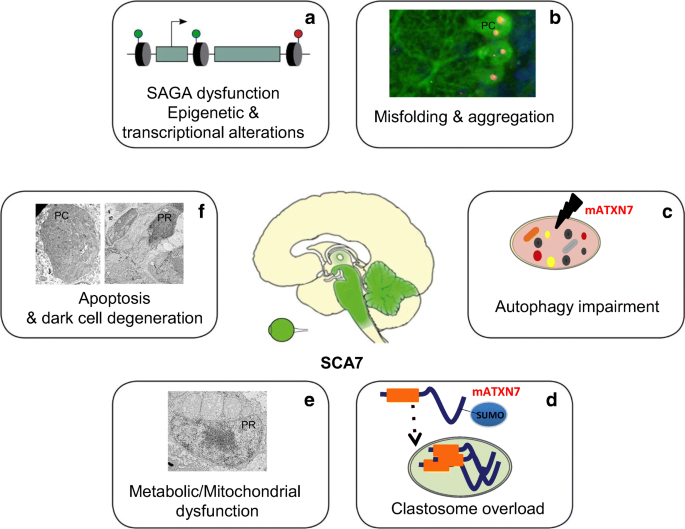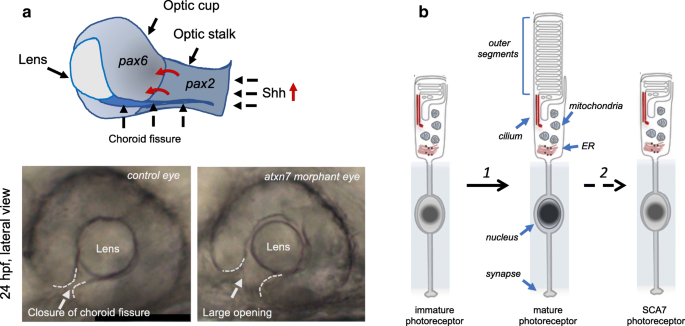
Disease Progression Despite Early Loss of Polyglutamine Protein Expression in SCA7 Mouse Model | Journal of Neuroscience

Disease Progression Despite Early Loss of Polyglutamine Protein Expression in SCA7 Mouse Model | Journal of Neuroscience
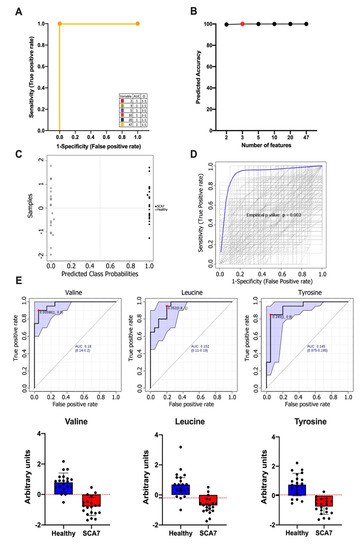
Biomolecules | Free Full-Text | Altered Plasma Acylcarnitines and Amino Acids Profile in Spinocerebellar Ataxia Type 7 | HTML
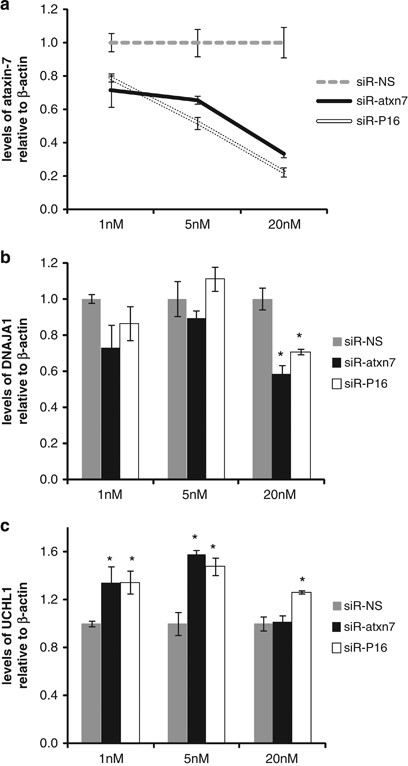
Allele-specific silencing of mutant Ataxin-7 in SCA7 patient-derived fibroblasts | European Journal of Human Genetics

Igfbp5 is decreased in the cerebellar granule layer of Sca1 and Sca7 KI... | Download Scientific Diagram

Cross-talking noncoding RNAs contribute to cell-specific neurodegeneration in SCA7 | Nature Structural & Molecular Biology

Cross-talking noncoding RNAs contribute to cell-specific neurodegeneration in SCA7. - Abstract - Europe PMC

Cross-talking noncoding RNAs contribute to cell-specific neurodegeneration in SCA7 | Nature Structural & Molecular Biology

Nicotinamide Pathway-Dependent Sirt1 Activation Restores Calcium Homeostasis to Achieve Neuroprotection in Spinocerebellar Ataxia Type 7 - ScienceDirect

PDF) Modulation of Increased mGluR1 Signaling by RGS8 Protects Purkinje Cells From Dendritic Reduction and Could Be a Common Mechanism in Diverse Forms of Spinocerebellar Ataxia

Disease Progression Despite Early Loss of Polyglutamine Protein Expression in SCA7 Mouse Model | Journal of Neuroscience
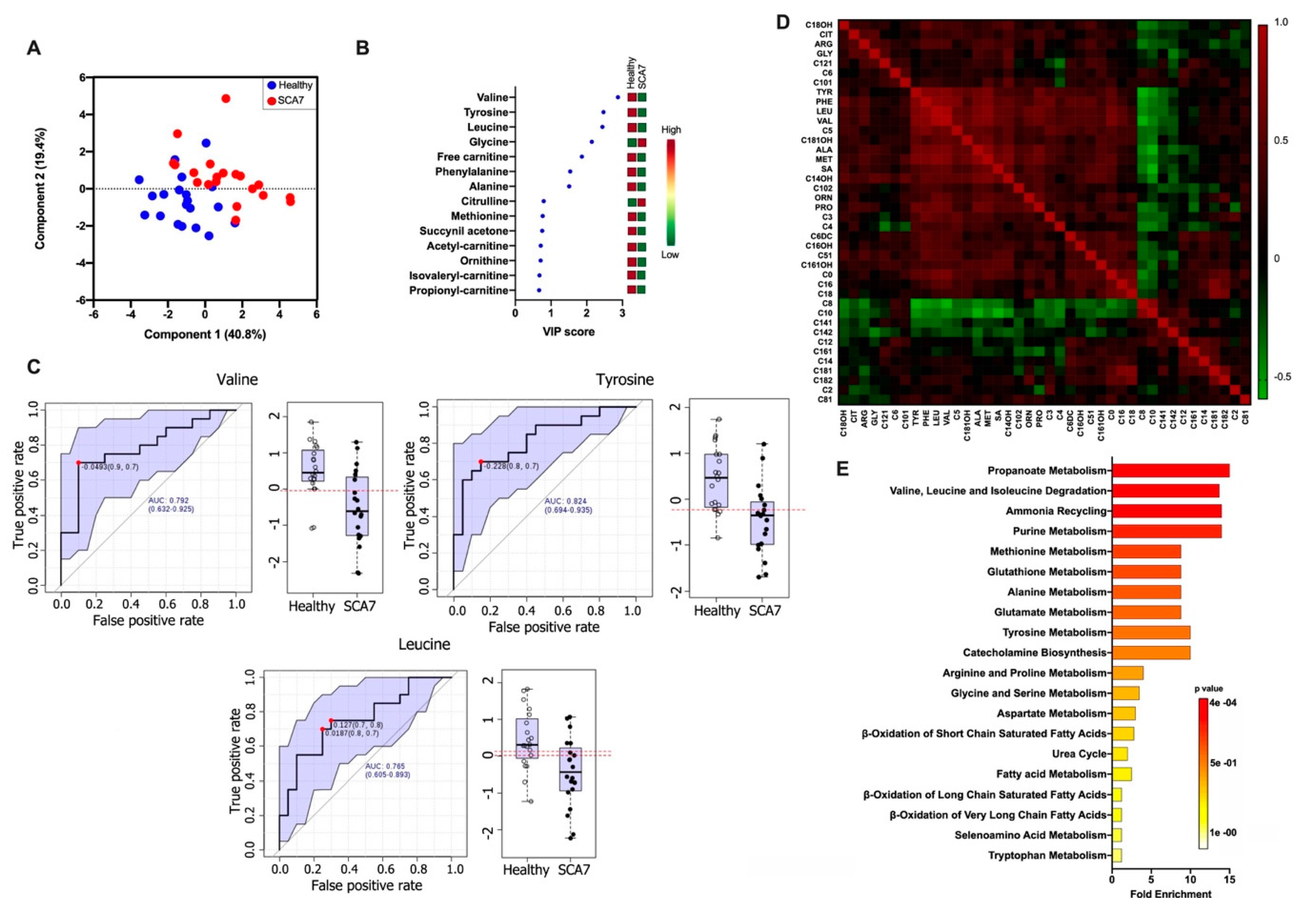
Biomolecules | Free Full-Text | Altered Plasma Acylcarnitines and Amino Acids Profile in Spinocerebellar Ataxia Type 7 | HTML

A Proposal for Classification of Retinal Degeneration in Spinocerebellar Ataxia Type 7 | SpringerLink
Glutamine-Expanded Ataxin-7 Alters TFTC/STAGA Recruitment and Chromatin Structure Leading to Photoreceptor Dysfunction
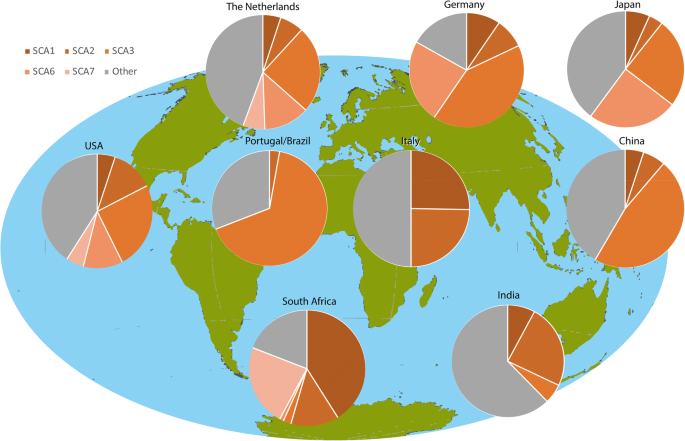
Genetics, Mechanisms, and Therapeutic Progress in Polyglutamine Spinocerebellar Ataxias | SpringerLink

Hsp70 and Hsp40 Chaperones Do Not Modulate Retinal Phenotype in SCA7 Mice*♢ - Journal of Biological Chemistry

Cross-talking noncoding RNAs contribute to cell-specific neurodegeneration in SCA7 | Nature Structural & Molecular Biology

Cross-talking noncoding RNAs contribute to cell-specific neurodegeneration in SCA7. - Abstract - Europe PMC

Cross-talking noncoding RNAs contribute to cell-specific neurodegeneration in SCA7 | Nature Structural & Molecular Biology

Cross-talking noncoding RNAs contribute to cell-specific neurodegeneration in SCA7 | Nature Structural & Molecular Biology


